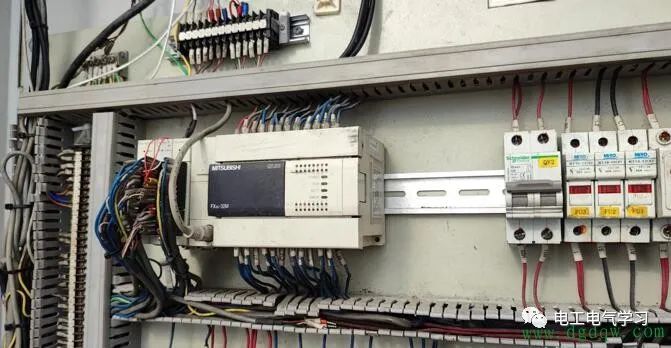 Search on WeChat
Search on WeChat Electrician and Electrical Learning
Electrician and Electrical Learning
As a maintenance electrician, it seems unreasonable or even impossible to not come into contact with PLCs in automation control. Nowadays, some manufacturers of electrical cabinets try to equip even a simple start-stop circuit with an unknown PLC to appear more advanced and align with international standards. You can ponder the reasoning behind this.
For PLCs, those of us who are older have had very little exposure to them, and compared to younger electricians, we clearly feel technically outdated. The younger generation are university graduates, have strong learning abilities, rich electronic knowledge, and are skilled in programming and design, which gives them an advantage.

As an electrician with outdated knowledge, there is no need to fear cabinets with PLCs. As long as we ensure that the peripheral circuits are correct, we do not need to worry about the internal programming issues. I have been in electrical maintenance for over 30 years and have found that faults in programming are rare; most issues arise from damaged peripheral components such as sensors, buttons, and contactors. Therefore, we older electricians need not be overly concerned about whether we can program or what to do if the program fails. As long as you can troubleshoot and repair the peripheral hardware, you will outperform 80% of electricians nationwide.
I work in a factory that produces float glass. The main equipment is manufactured in Germany. Generally, after a fault occurs, checking the alarms can usually help identify the fault point and cause. Therefore, PLC equipment is good, and the program logic is reasonable; these are all manageable by human effort. However, I can create detailed optical sensors, encoders for speed measurement, pressure sensors, and simple fuse fault alarms. Apart from this set of equipment, I have not encountered any faults that provide such detailed prompts on the upper computer. One can imagine how many years of technical tracking the manufacturer has done on their products. In contrast, when I help repair domestically produced shot blasting machines, even though they have PLCs, touch screens, and frequency converters, they always have touch screen alarms that only indicate a fault without specifying the location. The schematics are not marked. In the end, you always find a relay. When asking the manufacturer for the ladder diagram, they refuse to provide it. Ultimately, the limit switch is the one that triggers the alarm. Upon further investigation, there are alarms for high-speed fan thermal protection, shot blasting motor thermal protection, proximity switches at the steel shot discharge port, bucket elevator tail wheel speed measurement, high-pressure fan pressure detection, etc. All these alarm signals are just one output. There is no prompt; it’s just a fault. Without experience, it is truly impossible to repair.
Disclaimer: This article is reprinted from “Electrician Nut”, and the copyright belongs to the original author. If there are any copyright issues, please contact us promptly for deletion. Thank you!

● Enjoy! 135 Electrician Wiring Diagrams to Keep You Busy for a Day
●With the new Level 8 worker assessment delegated to the units, how arrogant are the electrician “technicians”?
●The highest realm of maintenance electricians is to guess the workshop director’s mind, which absolutely surpasses learning technology.
● Tragic! No voltage testing, resulting in electrocution and death!
● Yesterday I interviewed an electrician; can you solve these questions? Many electricians don’t even know the first one!